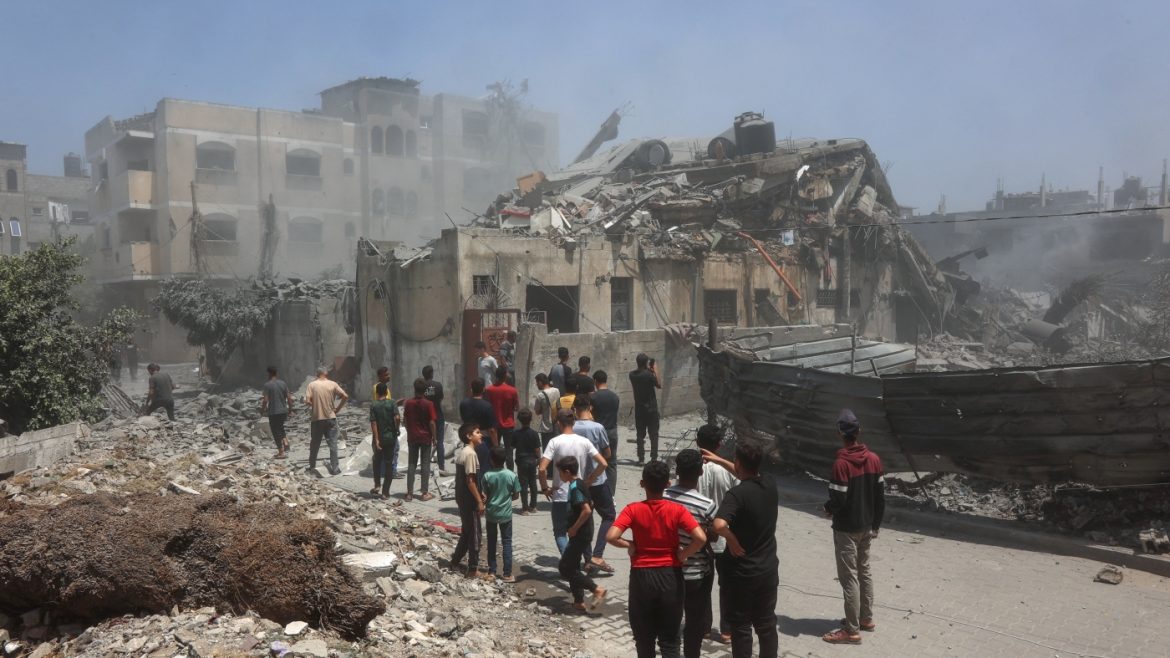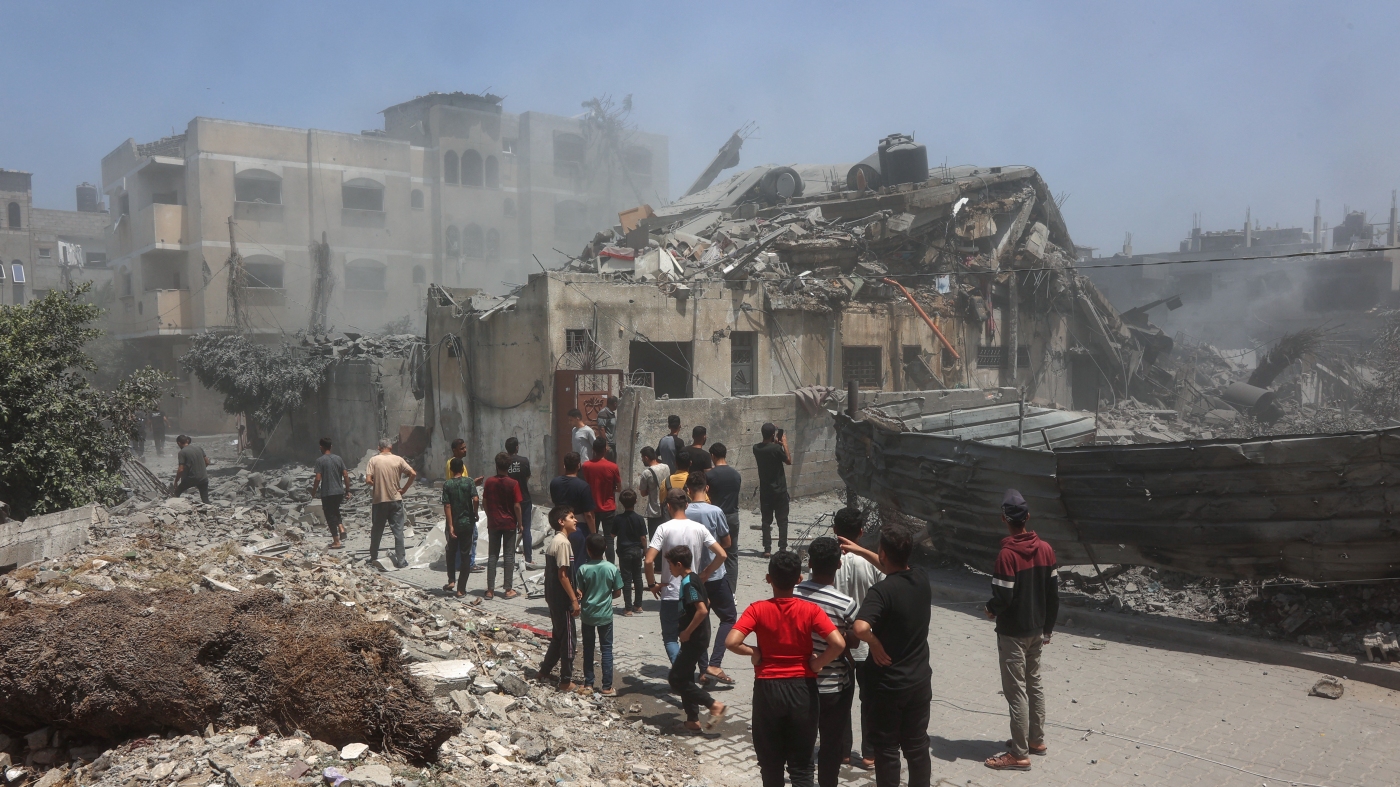The evolving dynamics of the Gaza conflict have drawn renewed international attention following a recent U.S.-led ceasefire proposal aimed at pausing hostilities and initiating hostage releases. This proposal, backed by Israel and mediated alongside Egypt and Qatar, seeks to establish a temporary truce for approximately 60 days and includes a phased release of hostages held by Hamas. The situation remains complex, with Hamas’s response marked by ambivalence and calls for amendments, while Israel signals conditional acceptance. This report dissects the information from multiple perspectives, exploring the intricacies of the proposal, the responses it has elicited, and the broader implications for conflict resolution in Gaza.
Context and Content of the U.S. Ceasefire Proposal
The United States, through its special envoy Steve Witkoff and with involvement from mediators Egypt and Qatar, has presented a ceasefire plan intended to halt the violence in Gaza. Key components of the proposal include:
– A temporary ceasefire lasting at least 60 days.
– The phased release of hostages, reportedly about half of those remaining in Hamas’s custody.
– Agreements on the flow of humanitarian aid into Gaza.
– Certain political and security guarantees, which are points of negotiation.
Israel’s endorsement of this plan is significant, as it signals willingness to pause military operations under specified terms. The proposal aligns with international and regional diplomatic efforts to stabilize the area and address humanitarian concerns following intense conflict cycles.
Hamas’s Response: Conditional Engagement and Strategic Calculations
Hamas has publicly acknowledged receipt and response to the U.S. ceasefire plan but has stopped short of fully endorsing the proposal as is. Several themes characterize their position:
– Seeking Amendments: Palestinian officials and senior Hamas representatives have indicated that while the group is open to ending hostilities, modifications are necessary. Areas requiring revision include the timing and guarantees surrounding hostage release, delivery mechanisms for humanitarian aid, and U.S. involvement assurances.
– Skepticism and Rejection of Certain Terms: Some Hamas officials have outright rejected aspects of the U.S. plan, viewing the Israeli response to the proposal as perpetuating “policies of killing and starvation” rather than fostering peace. This skepticism highlights distrust toward parties involved and concerns over cultural and political implications.
– Acknowledgment of Military Capability and Negotiation Realities: While affirming their ability to continue military operations, Hamas representatives express recognition of the need to reach an agreement to cease violence, suggesting pragmatic yet cautious engagement.
– Divergent Internal Messaging: Statements range from acceptance of ceasefire discussions to outright rejection reported by various news outlets, possibly indicating internal deliberations within Hamas or strategic signaling toward domestic and international audiences.
Israeli Perspective and Diplomatic Nuances
Israel’s acceptance of the U.S. proposal underscores a calculated readiness to engage in ceasefire talks under conditions considered to be in its strategic interest. However, Israel has also made counter-proposals, sometimes in “full coordination” with the U.S., reflecting a desire to shape terms more favorably while maintaining security priorities.
Israeli officials view the proposal as a means to:
– Secure the release of Israeli hostages.
– Ensure a halt to rocket attacks and military threats from Gaza.
– Facilitate controlled humanitarian aid to alleviate Gaza’s precarious situation without compromising security.
The interplay between acceptance of the ceasefire framework and the issuance of counter-proposals reveals a tactical approach aimed at achieving maximum leverage in ongoing negotiations.
Broader Regional and International Implications
The diplomatic engagement surrounding this ceasefire attempt highlights several broader themes:
– Role of Mediators: Egypt and Qatar’s involvement signals the importance of regional players capable of bridging communication gaps between Israel and Hamas, given their geopolitical ties and influence.
– U.S. Diplomatic Stance: The U.S. administration, including the Trump-era envoy and current officials, exhibits optimism about the prospect of a ceasefire but remains prepared for protracted negotiations considering Hamas’s demands and Israel’s security concerns.
– Humanitarian Considerations: The proposal’s emphasis on aid delivery reflects global concern for Gaza’s civilian population, whose suffering often escalates during hostilities.
– Hostage Crisis as a Central Negotiation Element: The release of hostages represents not only a humanitarian imperative but also a critical bargaining chip affecting trust and negotiation dynamics.
Challenges to Achieving a Lasting Ceasefire
Despite apparent progress, several obstacles threaten the realization and sustainability of a ceasefire:
– Mutual Distrust: Long-standing hostilities and recent military escalations foster deep skepticism on both sides, complicating agreement implementation.
– Demands and Conditions: Hamas’s insistence on amending timing and guarantees reflects unresolved issues in operationalizing the ceasefire, particularly around hostage release sequencing.
– Internal Political Pressures: Both Hamas and Israeli leadership face domestic audiences with divergent expectations, limiting flexibility.
– Risk of Renewed Violence: Any perceived violations or delays may rapidly rekindle hostilities, especially given the fragile security situation in the region.
Conclusion: Paths Forward for Conflict De-escalation
The latest U.S. ceasefire proposal represents a critical juncture in the Gaza conflict, offering a structured opportunity to pause violence and begin addressing humanitarian and security concerns. Hamas’s nuanced response—both receptive and demanding amendments—illustrates a complex negotiation landscape shaped by strategic calculations, mutual mistrust, and competing political imperatives. Israel’s conditional acceptance and counterproposals underscore its effort to balance security with diplomatic openings.
For meaningful progress, continued dialogue facilitated by trusted regional mediators, transparent communication on hostage arrangements, and firm commitments to aid delivery are essential. The international community’s watchful involvement and measured diplomatic pressure may help nudge both parties toward a ceasefire that transcends temporary calm to foster longer-term stability in Gaza. The coming days will test the durability of these initiatives and the broader capacity for conflict resolution in one of the world’s most protracted and challenging disputes.


